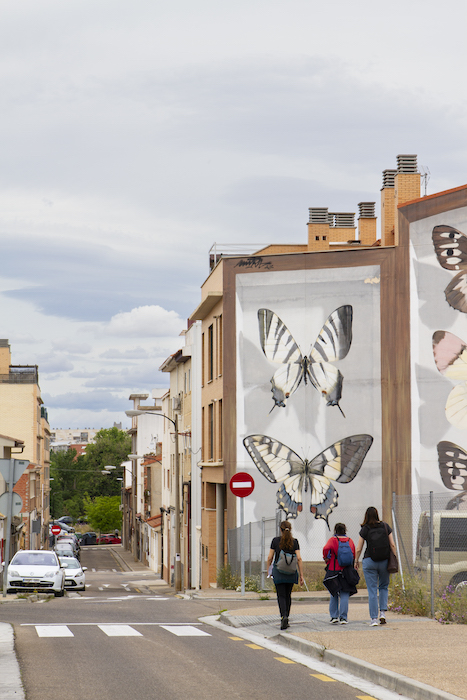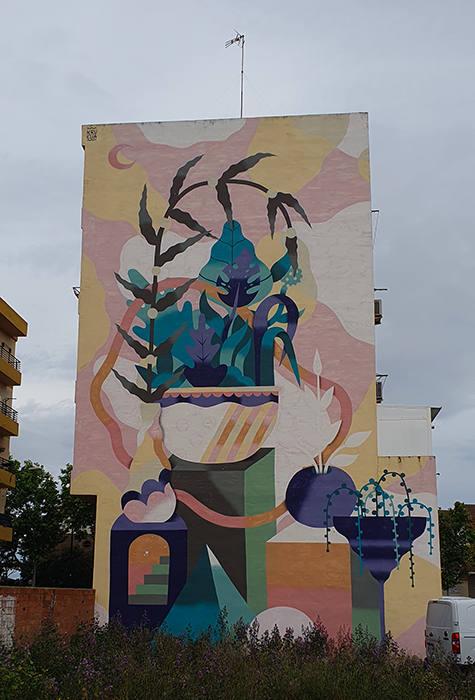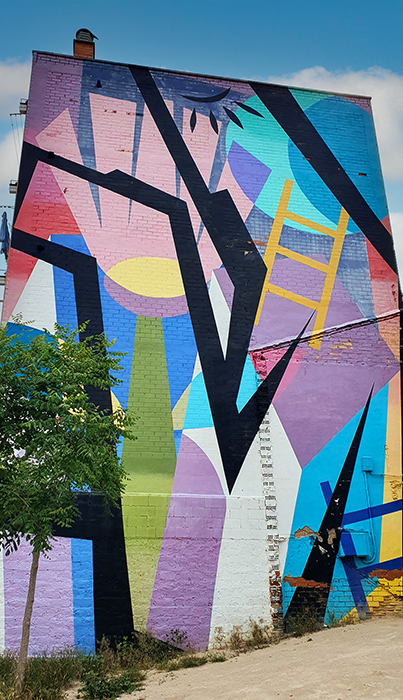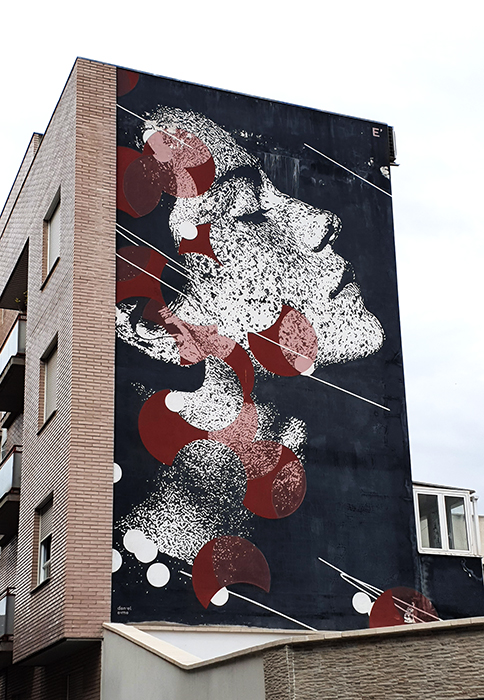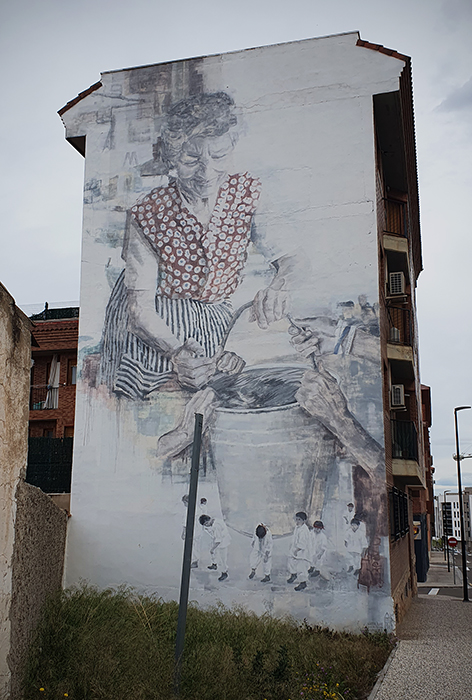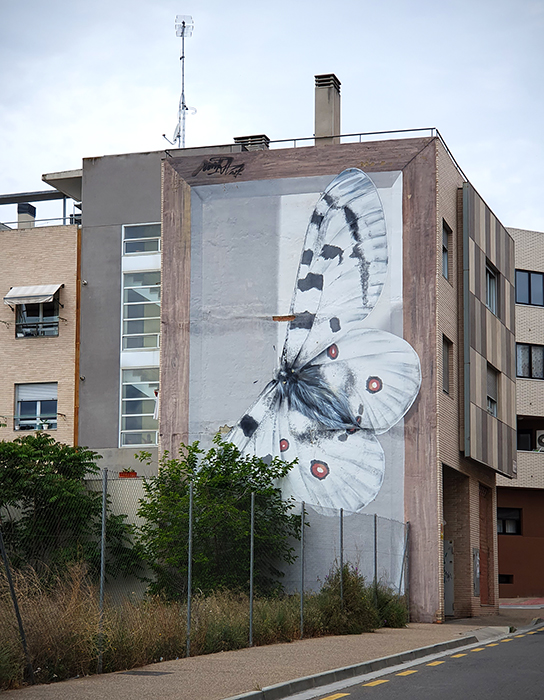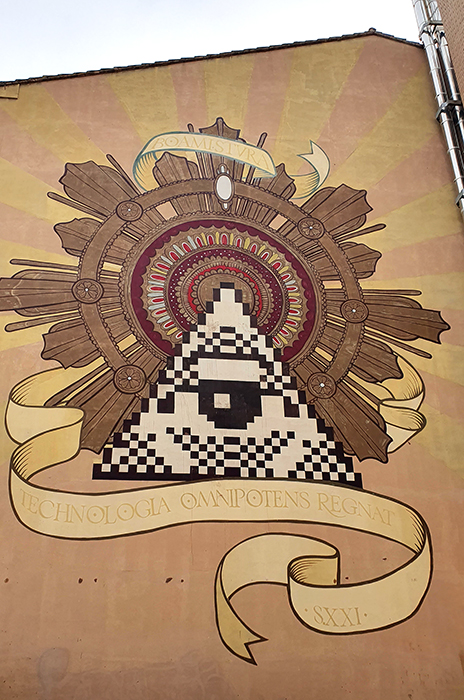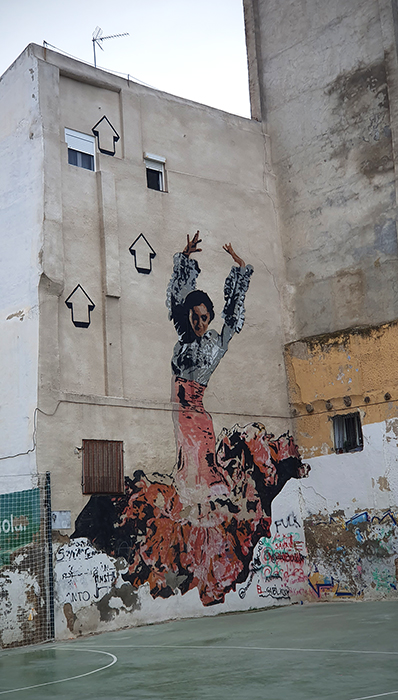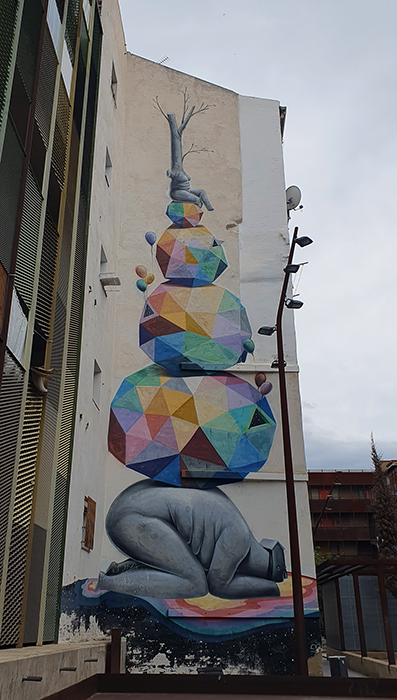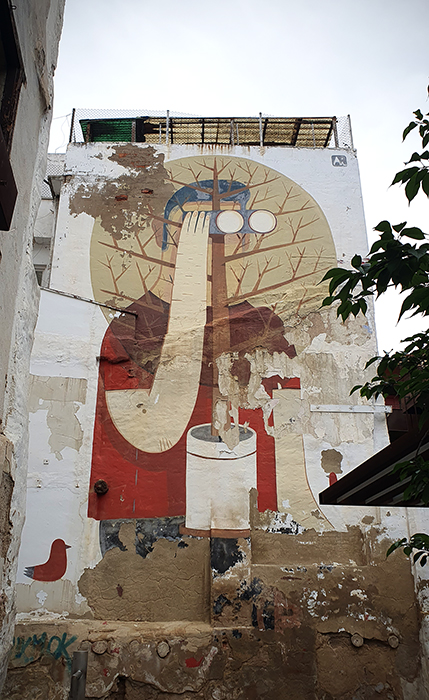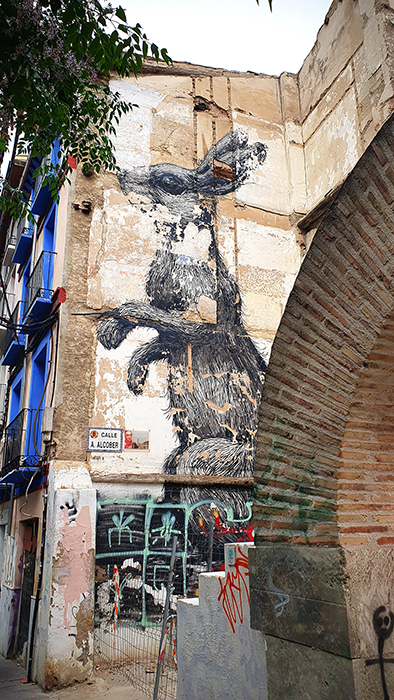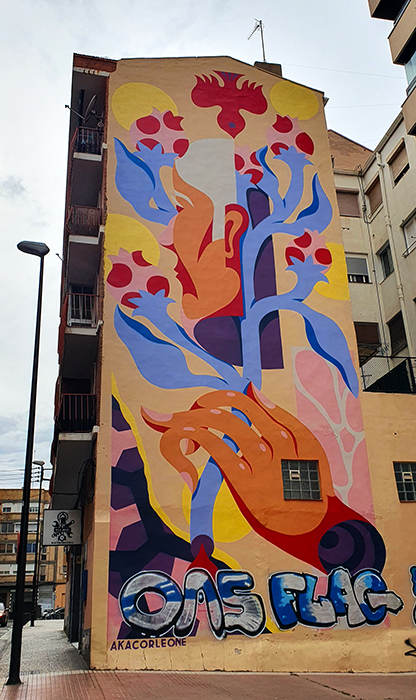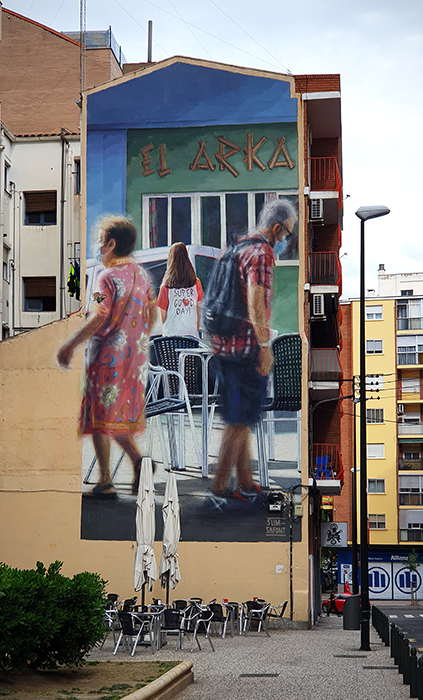Street art in Zaragoza, a city in northern Spain, has flourished since the Asalto Festival emerged in 2005 as a canvas for reimagining urban life. As one of the oldest street art festivals in Europe and the oldest in Spain, the festival Asalto continues to transform the city’s public spaces with vibrant murals and street installations.
Conceived with the vision to ‘explore, discover, or rediscover the urban environment through artistic activities, actions, and diverse urban experiences,’ the festival transforms the streets of a different Zaragoza neighborhood with each edition.
Spanning over the course of several months, the Festival Asalto offers a unique artistic experience where the entire creative process and its execution take place right on the streets of Zaragoza. These streets transform into the ultimate workshop, canvas, and gallery, making the city itself an integral part of the art.
Discover Festival Asalto, The Oldest Street Art Festival in Spain.
Annually, the Asalto Festival organizers thoughtfully choose themes that are deeply influenced by the current socio-economic environment, aiming to innovate in the creation and expression of art. Themes such as “Forgotten Spaces,” “Nature,” “Manipulation,” “Technology,” and “Non-Spaces” have guided the creation of numerous artworks distributed across the city. These pieces often breathe new life into semi-ruined or abandoned walls in the historic center or transform unfinished buildings on the outskirts with vibrant murals.
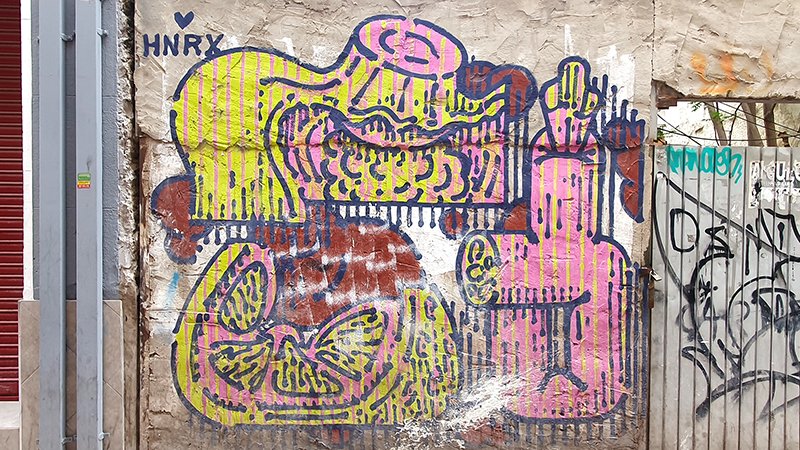
The Asalto Festival significantly revitalizes depressed neighborhoods through the engagement of citizens, the rehabilitation of streets, and artistic enhancements in these areas. By using urban art to spotlight various underprivileged areas and “non-places,” the festival effectively empowers the residents of Zaragoza. The artworks produced during the festival are particularly compelling due to the deeper messages they carry. Many of these pieces feature rich symbolism, poetic expressions, and social critique, positioning art as a crucial medium for voicing societal concerns.
Come with me as I delve deeper into the stories behind the Zaragoza murals!
- Discover Festival Asalto, The Oldest Street Art Festival in Spain.
- Zaragoza Street Art Map (updated!)
- A Street Art Day Trip to Zaragoza: Barrio Oliver
- Murals in Zaragoza: Valdefierro Neighborhood
- Festival Asalto at Zaragoza’s Parco de las Delicias
- Street Art in Zaragoza City Center: Casco Antiguo and El Gancho Neighborhoods
- Street Art in Zaragoza: Barrio San Jose
- Street Art in Zaragoza: The Other Side of the Ebro River
- Zaragoza Street Art Map (updated!)
Zaragoza Street Art Map (updated!)
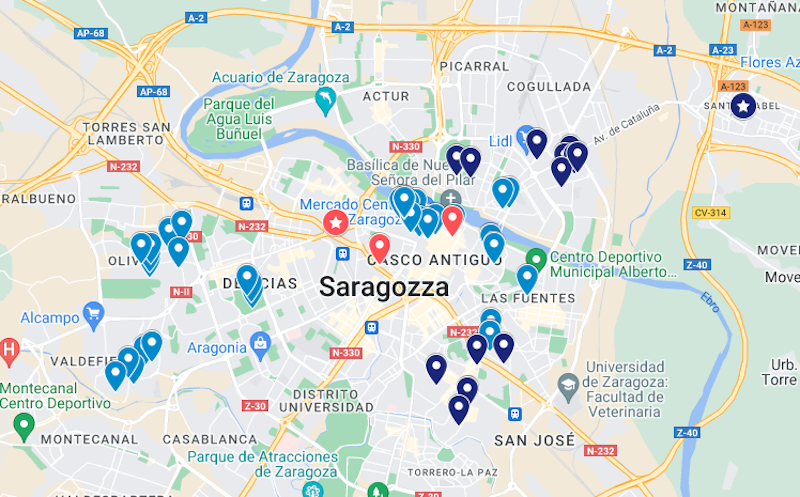
A Street Art Day Trip to Zaragoza: Barrio Oliver
Arriving at Zaragoza-Delicias train station after a 1.5-hour ride from Madrid (the journey is even shorter if you come from Barcelona), our first stop was the Oliver neighborhood. Just a 20-minute walk from the station, this multicultural area offers a rich community atmosphere.
In 2018, Barrio Oliver served as the backdrop for the 14th Festival Asalto. This edition of the festival was characterized by a community-focused approach: artists incorporated design proposals from residents, enriching the festival with vibrant local creativity and engagement.
Our first mural was a masterpiece by Portuguese artist Kruella D’Enfer. Her work depicted lush, well-cared-for plants as a metaphor for nurturing our spaces, both private and public. For Kruella, plants symbolize the delicate balance of care needed in our environments, with the message: “Water your plants, take care of your neighborhood.”
Next to this, we found an abstract mural by Spanish artist Digo Diego, inspired by workshops, games, and brainstorming sessions with neighborhood residents.
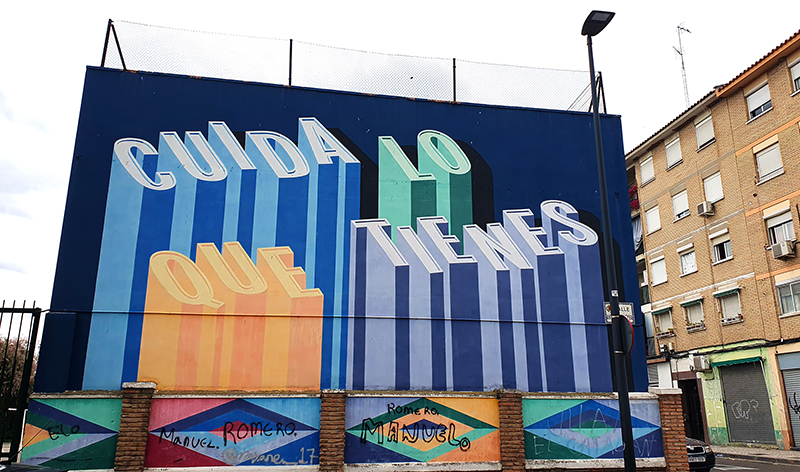
Continuing the theme of community care, Portuguese graphic design collective Halfstudio created a mural with the phrase “Take care of what you have and fight for what you want,” in their iconic typographic style. This sentence was originally found in a community mural from the 1990s, painted by residents and artist Manuel Vazquez to raise awareness about local social issues. The geometric patterns in these murals are inspired by those in the dome of the Zaragoza Cathedral.
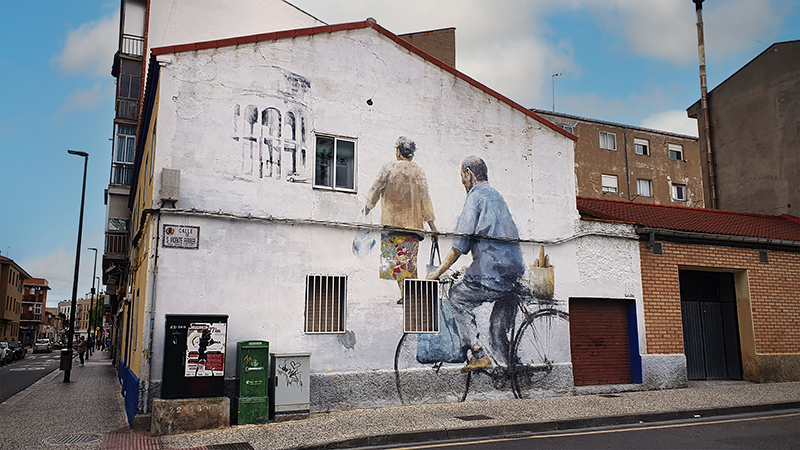
Nearby, my favorite mural in Barrio Oliver stands out: a stunning piece by Basque artist Udatxo. Known for capturing ordinary people in their daily routines, this mural depicts an elderly couple returning from the market, with a local water tower visible in the background.
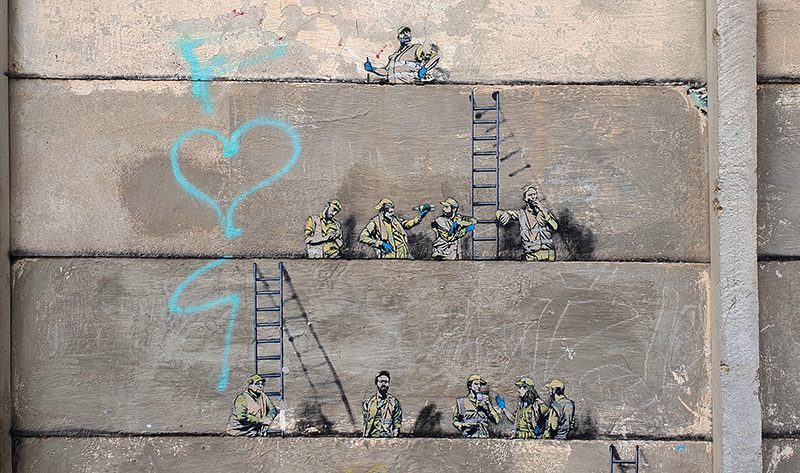
Under the actual tower, which can be spotted on the same street, you can find a playful intervention by Belgian artist Jaune, featuring garbage men engaged in various activities except working.
- Read also: “My week with Jaune in Gaeta, Italy“
Two more murals add to the beauty of the Oliver neighborhood in Zaragoza: a piece by Portuguese stencil artist Daniel Eime, depicting a woman, and a masterpiece by Manolo Mesa.
- Read also: “My week with Daniel Eime in Rome, Italy“
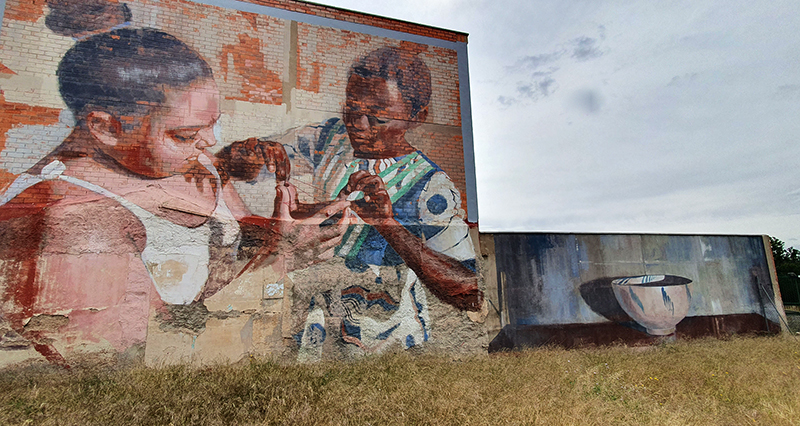
Manolo Mesa‘s mural features his iconic vase and two young migrants, representing the neighborhood’s history of immigration. The children are shown playing the string game, symbolizing the ties formed between different cultures, communities, and ethnicities living together in this vibrant area.
Murals in Zaragoza: Valdefierro Neighborhood
From Oliver, we walked to Valdefierro, a peripheral area where old shacks and small houses are being replaced by modern, albeit somewhat cold, buildings. Zaragoza’s Valdefierro neighborhood was home to the 2017 Festival Asalto, which featured some exceptional street artists.
Here, English artist Helen Bur created “Water / Life,” a poignant mural highlighting the importance of drinkable water. This artwork is a tribute to the women of the neighborhood who fought to bring running water to Valdefierro until 1974. At the same time, it serves as a reminder that access to clean water remains scarce in many parts of the world.
- Read also: “My interview with Helen Bur at Nuart Aberdeen“
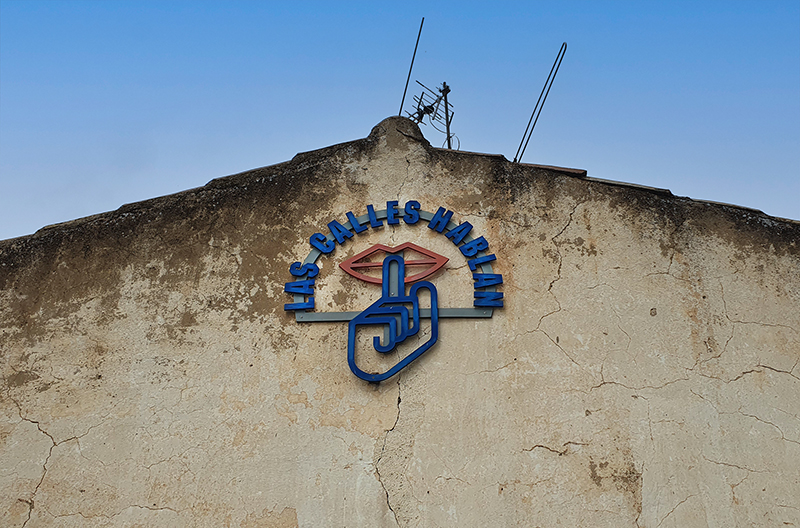
On the same street, we encountered an installation by Miguel Maestro (aka Maestro Cerezo) titled “Las Calles Hablan” (The Streets Speak). Through a unique combination of typography and iconography, this piece pays tribute to the power of silence as an extraordinary communication tool, a street code that connects us in a unique way.
Valdefierro also hosts two large murals by French artist Mantra, who painted his iconic butterflies in a highly realistic style, arranging them as if in an entomology museum. This is the artist’s tribute to the nature that surrounds us, often invisible in cities but present at every moment.
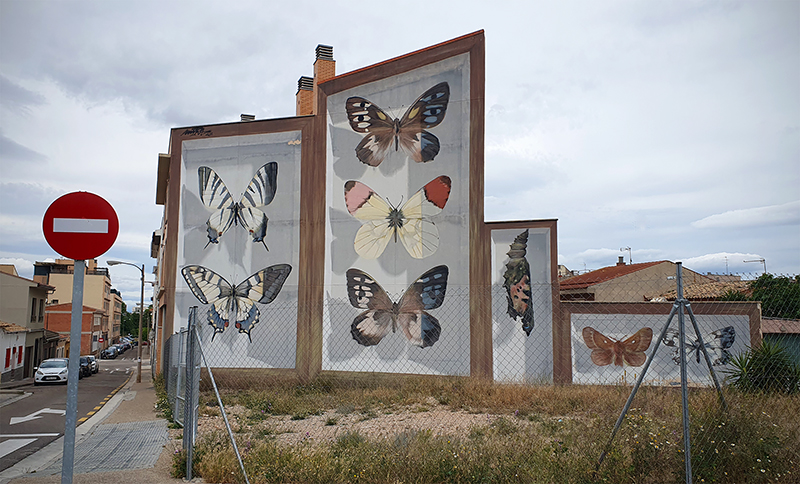
Another French artist featured in Festival Asalto 2017 was Zest, who transformed a staircase with his abstract style, creating a play of perspectives filled with volume and color. Using the codes of cubism and the decomposition of movement, Zest’s work bursts with bright fluorescent colors.

Festival Asalto at Zaragoza’s Parco de las Delicias
Delicias Park hosted the 2016 Festival Asalto, and although many years have passed, causing much of the artwork to deteriorate or disappear, I was eager to see the creations of some of my favorite street artists who participated in this edition -or better, what was left of those artworks.
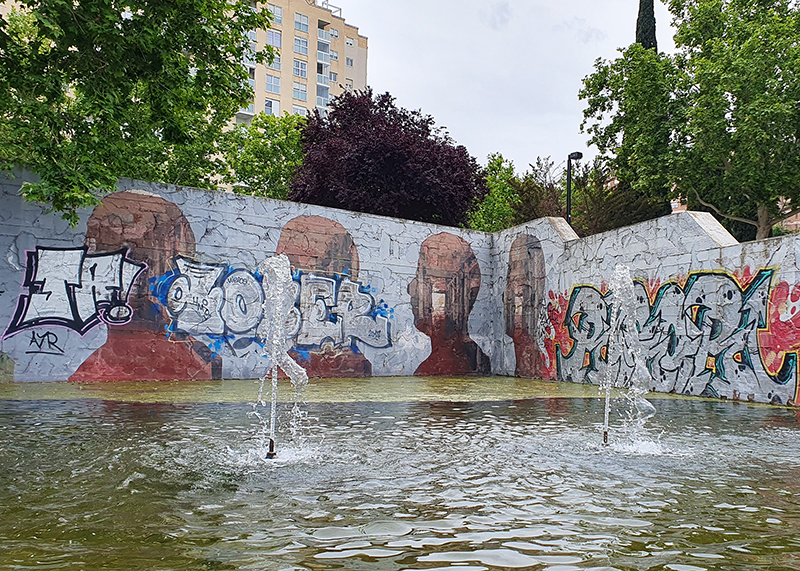
Most of the heads painted by Borondo for his artwork “Psyche” on the wall surrounding a fountain in the park have been painted over, at least on the bottom part. The park, formerly owned by a mental health hospital, inspired Borondo to focus on the human mind in his work. Interestingly, these heads were used to create a gif, which can still be viewed on the artist’s website. However, two faces remain almost intact, albeit bleached, in the corner of the fountain—a delightful find!
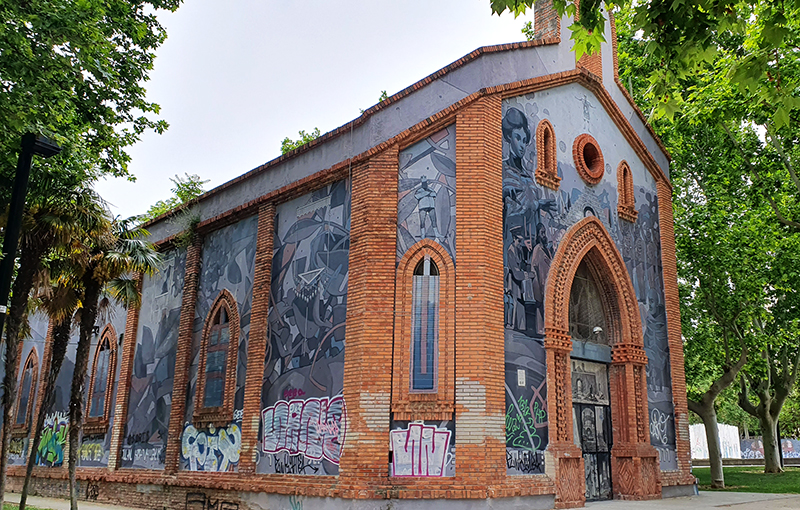
Another artwork that has aged well in Zaragoza’s Delicias Park is the chapel painted by Aryz and SAN (Daniel Muñoz). Their work envelops the entire chapel, transforming the traditional religious architecture into a fusion of their respective artistic styles: SAN’s engraving-like technique and Aryz’s characters painted in his signature style of that period, characterized by a delicate tone-on-tone palette quite different from his current use of colors (it was 2016, after all).
Street Art in Zaragoza City Center: Casco Antiguo and El Gancho Neighborhoods
As lunchtime approached, we headed towards the city center to find a cozy spot to eat (spoiler: we ended up in a grimy, decidedly non-vegan-friendly place). The city center of Zaragoza, with its Casco Antiguo and El Gancho neighborhoods, is where Festival Asalto began. The festival focused on forgotten places, destroyed and unreconstructed buildings, and the social fabric of this troubled area. Here, dilapidated homes, dirt, and decay run parallel (in the sense of parallel lines that never meet) with shopping streets lined with the usual fast-fashion brands found in every city worldwide.
While many murals in the historic center of Zaragoza have disappeared, many others remain. These murals testify that what might appear at first glance to be construction sites in a city in transformation (as I initially thought from online photos showing scaffolding, barriers, dilapidated buildings, debris, and restricted areas) are actually scenes of permanent precariousness and hardship. These conditions have persisted for nearly 20 years, ever since Festival Asalto was founded in 2005 to highlight these non-places.
Among the murals still visible in Zaragoza’s historic center is the first mural ever produced by Festival Asalto, created by the collective Boa Mistura. Titled “Tecnologia Omnipresent Regnat,” the artwork replicates deeply rooted religious iconography, expressing that both religion and technology are omnipresent today.
Other murals you can still enjoy in Zaragoza’s city center include the Flamenco dancer painted by American street artist Above, and a piece by French artist Popay on the headquarters of the city’s Social Circus.
There’s also a courtyard preserving the legacy of the old styles of two legendary urban artists, Spanish artist Okuda and Italian artist Agostino Iacurci. Both have evolved from the styles they used during their participation in Festival Asalto, making their works here especially precious.
German artist 1010 opened the way to a new dimension, while ROA painted a rabbit ‘tied’ to cables right next to a piece by Laguna, which is in very bad shape but still showcases the immense talent of this Spanish artist.
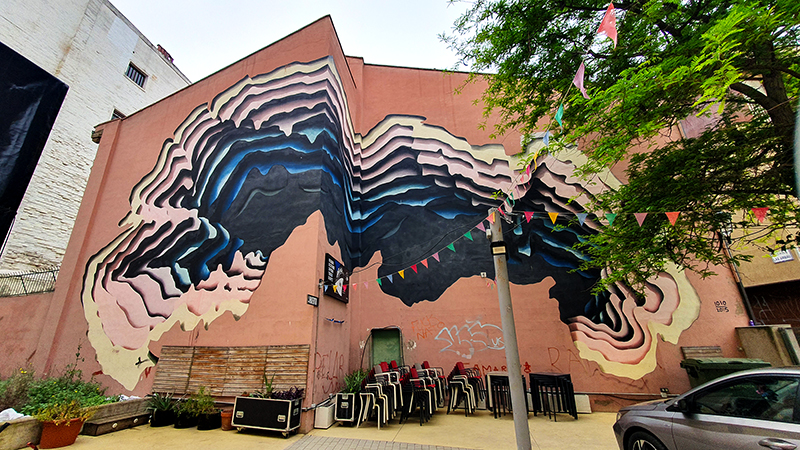
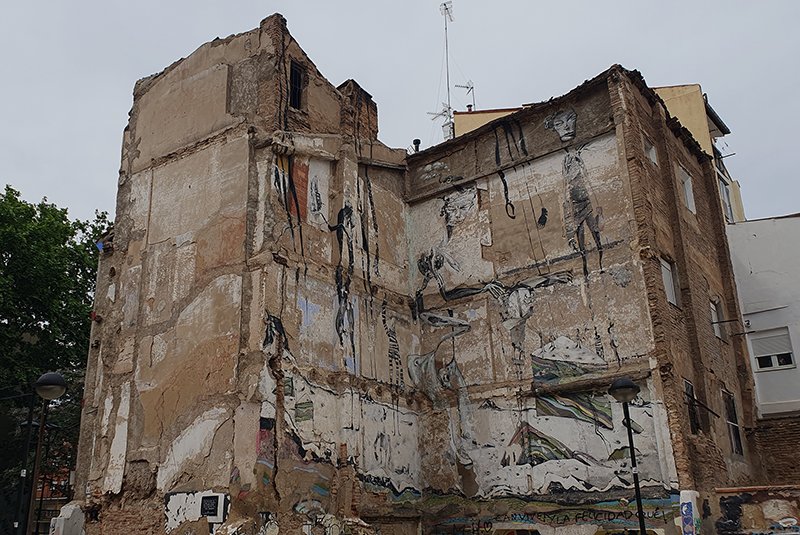
Street Art in Zaragoza: Barrio San Jose
Finally, from the city center, we made our way to Barrio San Jose, home to Festival Asalto 2020 and some older pieces, such as this mural by Zesar Bahamonte. His inspiration stems from the folklore (music and dances) of Andalucia, Southern Spain, where he hails from.
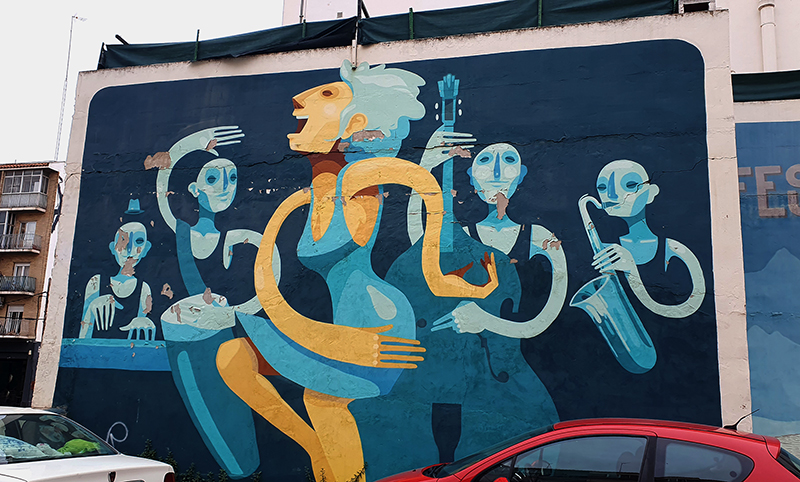
Another notable mural in Zaragoza’s San Jose neighborhood is by Valencia-based artist Dulk, painted in 2014. This composition of his characteristic surreal characters has aged beautifully, with the colors gaining poetic softness over time (the artwork is now 10 years old!).
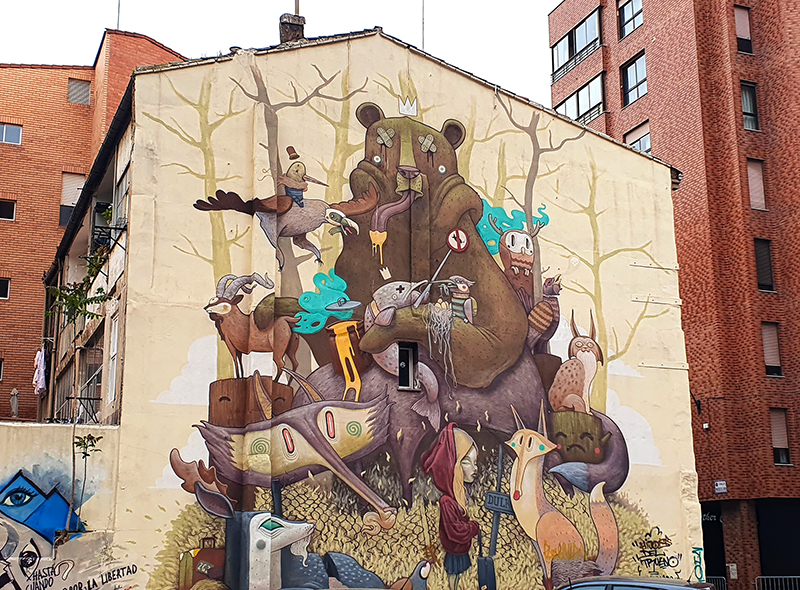
Titled “Tribute to the Iberian Wildlife,” the mural features animals recognizable as the Iberian fauna (the brown bear, the lynx, the fox, the partridge) alongside fairy-tale characters like Little Red Riding Hood and the Wolf. The dying forest from which the animals emerge like zombies symbolizes the pollution and destruction caused by humans.
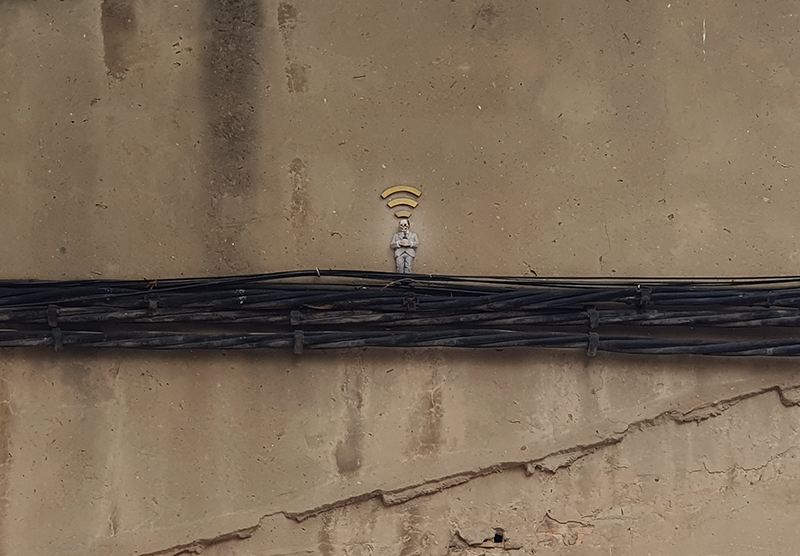
In Barrio San Jose, we also spotted a tiny figure by Spanish artist Isaac Cordal, who, since 2006, has been placing miniature sculptures in public spaces worldwide as part of his ongoing series Cement Eclipses. Made of cement and reproduced using silicone molds, Cordal’s figurines are arranged in scenes that capture the absurdity of human existence through miniaturization and site-specific placement.
Before hurrying to catch the last train, we visited two final murals on opposite sides of the same building, created by Portuguese artist Akacorleone and Spanish artist Slim Safont.
Akacorleone’s “Ilusion” is a vibrant mural that blends abstraction and figuration, symbolizing the resilience and flourishing of the human spirit after experiencing difficult situations.
On the other side of the building, Slim Safont painted “Blurred Future,” a realistic depiction of a real-life scene that occurred on that very corner (the sign of the nearby shop is recognizable). The mural, created in 2020 during the pandemic, captures a young girl with a cheer slogan on her t-shirt between two more characters wearing the facemask.
Street Art in Zaragoza: The Other Side of the Ebro River
As the oldest street art festival in Spain, Festival Asalto has left its mark on numerous neighborhoods across Zaragoza. There’s much more to explore on the other side of the river, especially in areas like Barrio Del Jesús, Arrabal, and Santa Isabel.
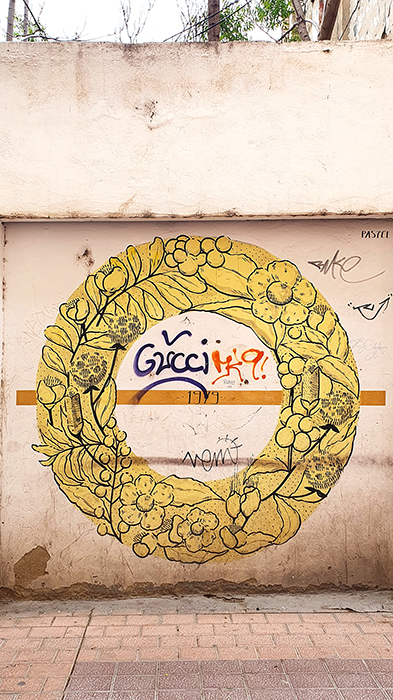
Unfortunately, we had to catch a train back to Madrid, so we couldn’t cover that area this time. However, this gives us a perfect reason to return to Zaragoza soon and continue discovering the city’s vibrant urban art scene!
Zaragoza Street Art Map (updated!)

